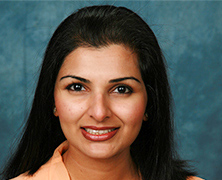ENGINEER DRIVING DIVERSITY FOR WOMEN IN STEM
Rashmi Rao is responsible for defining HARMAN’s technology strategy and roadmap to drive breakthrough user experiences in next-gen connected cars. As senior director of advanced systems and user experience, she oversees the direction and management of the advanced engineering organization.
Her illustrious career spans positions of growing responsibility within large, reputable technology companies, working on applications that millions of consumers interact with every day. With the emergence and push toward autonomous vehicles, future vehicles will participate in diverse ecosystems for frictionless transition of content and control between home, vehicle and personal devices to create an integrated experience. Rashmi keeps the vision of the connected car at the top of her mind, and incorporates design concepts for HARMAN’s intuitive data displays that offer consumers a personalized, contextual interaction.
She is an advocate of STEM education and actively lobbies for diversity in technology work places. She rose through the ranks at companies including Apple and Qualcomm. While at Apple, she played a pivotal role in the strategy and technology of the iPhone. While at Qualcomm, she founded QWISE: Qualcomm Women in Science and Engineering – a grass roots group focused on professional and personal development of women in technology. This group expanded to more than 12 countries during Rashmi’s time at the company.
In the words of Rashmi Rao:
How can the world increase diversity in STEM fields?
“Driving diversity across all STEM industries is a conversation that must continue to increase, be heard, and be acknowledged. Companies that have a gender balance in senior management positions have already seen the great benefits first hand, as contributions of diverse people have an immense impact on technological advancement. Business, government and academia must continue to promote the importance of women in STEM and the great benefits that come along with having female leadership.”
What barriers are in the way to closing the gender gap in STEM?
“In society, we must always remember that it doesn’t matter where a good idea comes from. We are a gender and racially diverse society, where people from all walks of life contribute valuable viewpoints to solve complex problems.”
Where do you see women in STEM in five years?
“As women currently remain underrepresented in the science and engineering workforce, I am optimistic and believe in the next five years to a decade – more women will enter the industry and continue to rise and excel through leadership in STEM roles.”
Words I live by:
“True progress happens when you shift focus away from what you want and get deeply, intensely curious about what the world wants and needs.”







